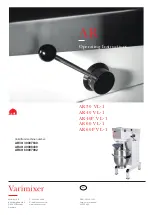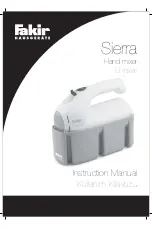
MIX MINUS
Summa’s mix minus system allows a comprehensive foldback mix to be sent to multiple listeners. Using the auto minus
bus along with mix minus outputs allows you to provide to listeners a complete mix with their own input automatically
removed.
Foldback is a term used to refer to audio mixes used to feed communications systems, usually from control rooms into
studios, to allow presenters and performers to hear all audio content which is relevant to them.
Why remove a source’s own input from its foldback mix?
Scenario one:
Field reporters or presenters communicating via long distance systems e.g. satellite links.
Field reporters need to hear a live mix of the program to which they are contributing in order to hear cues and
communicate with other presenters. The inherent delay in the system means that it may be a number of seconds before
the live audio stream reaches the reporter.
It can be very difficult to speak whilst hearing your own voice even with only a slight delay. Using an auto minus feed for
the reporter solves this problem as their own contribution to the audio mix is removed before it is fed to their headphones
or monitoring system.
Scenario Two:
Eliminating feedback when using loudspeakers for communication.
If a presenter is monitoring their foldback feed using a loudspeaker, the sound from the loudspeaker signal may be picked
up by the presenter’s microphone, thus creating a feedback loop. By using the auto minus bus to remove the presenter’s
own contribution to the foldback bus, this feedback loop is broken.
Mix Minus Output
Each channel and group has a dedicated mix minus output available for patching to external communications devices to
create foldback feeds. Each mix minus output can be fed by either the auto minus bus, an aux or a track bus.
Summary of Contents for SUMMA
Page 11: ...V3 0 196 V3 1 197 V3 1 1 197 V3 2 197 CALREC Putting Sound in the Picture 11...
Page 12: ...12 SUMMA Networked Audio Production System CONTENTS...
Page 13: ...PRODUCT INFORMATION calrec com Putting Sound in the Picture SUMMA...
Page 20: ...20 SUMMA Networked Audio Production System PRODUCT INFORMATION...
Page 21: ...SYSTEM OVERVIEW calrec com Putting Sound in the Picture SUMMA...
Page 33: ...CALREC Putting Sound in the Picture 33...
Page 38: ...38 SUMMA Networked Audio Production System SYSTEM OVERVIEW...
Page 52: ...52 SUMMA Networked Audio Production System SYSTEM OVERVIEW...
Page 53: ...SETTING UP calrec com Putting Sound in the Picture SUMMA...
Page 55: ...FIGURE 1 SYNCHRONISATION OPTIONS CALREC Putting Sound in the Picture 55...
Page 74: ...74 SUMMA Networked Audio Production System SETTING UP...
Page 75: ...GETTING SIGNALS IN AND OUT calrec com Putting Sound in the Picture SUMMA...
Page 93: ...FIGURE 4 SOURCE AND DESTINATION POP UP MEMORY LOAD CALREC Putting Sound in the Picture 93...
Page 105: ...MONITORING calrec com Putting Sound in the Picture SUMMA...
Page 107: ...FIGURE 2 EXAMPLE LOUDSPEAKERS SETUP CALREC Putting Sound in the Picture 107...
Page 110: ...FIGURE 1 THE MONITORING POP UP 110 SUMMA Networked Audio Production System MONITORING...
Page 113: ...METERING calrec com Putting Sound in the Picture SUMMA...
Page 121: ...calrec com Putting Sound in the Picture SUMMA PROCESSING...
Page 153: ...COMMUNICATIONS calrec com Putting Sound in the Picture SUMMA...
Page 161: ...FIGURE 4 MIX MINUS CONTRIBUTION POP UP CALREC Putting Sound in the Picture 161...
Page 163: ...ROUTING calrec com Putting Sound in the Picture SUMMA...
Page 165: ...FIGURE 1 CONFIGURING BUSES AND OUTPUTS CALREC Putting Sound in the Picture 165...
Page 171: ...EXTERNAL INTERFACING calrec com Putting Sound in the Picture SUMMA...
Page 179: ...FIGURE 2 LAN CONFIGURATION WINDOW CALREC Putting Sound in the Picture 179...
Page 180: ...180 SUMMA Networked Audio Production System EXTERNAL INTERFACING...
Page 181: ...CONSOLE FACILITIES calrec com Putting Sound in the Picture SUMMA...
Page 187: ...TERMINOLOGY calrec com Putting Sound in the Picture SUMMA...
Page 195: ...FEATURES BY SOFTWARE VERSION calrec com Putting Sound in the Picture SUMMA...
















































